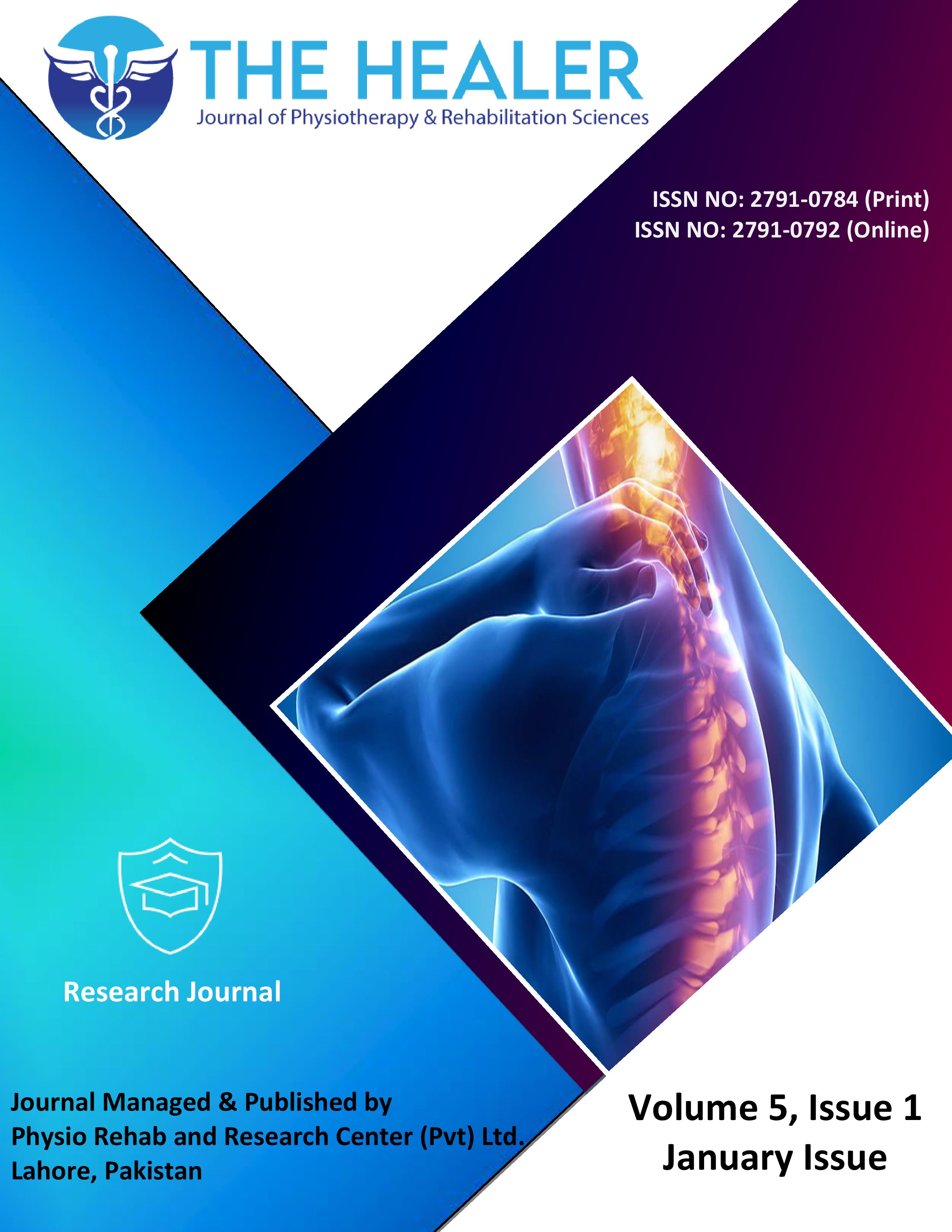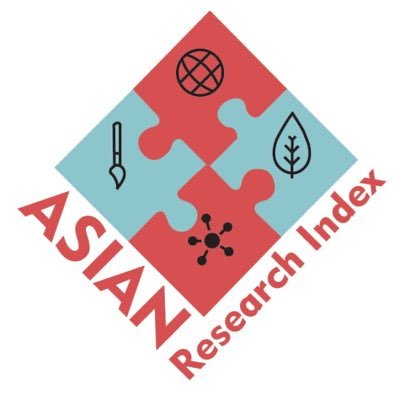Relationship between Antenatal Care Utilization and Post-partum Complications in Mothers; Evidence from Pakistan Demographic and Health Survey Data - 2019
Antenatal Care Utilization and Post-partum Complications in Mothers
DOI:
https://doi.org/10.55735/hjprs.v5i1.311Keywords:
Antenatal care utilization, Pakistan demographic and health survey, Post-partum complications, Reproductive AgeAbstract
Background: Pregnancy and childbirth represent significant milestones in women’s lives, accompanied by both joy and challenges. Access to quality antenatal care is essential for ensuring the well-being of mother and child. Objective: To analyze the relationship between antenatal care utilization and postpartum complications among mothers of reproductive age using Pakistan Demographic and Health Survey Data 2019. Methodology: In this study data from Pakistan Demographic and Health Survey 2019 of all the Provinces was used. The ethical approval for the PMMS 2019 survey was obtained from The National Bioethics Committee of Pakistan, the Demographic and Health Surveys Program and the ICF Institutional Review Board. All respondents provided written informed consent before participation during the PMMS 2019 fieldwork. A sample consisted of 6,907 women aged 15 to 49 years who delivered a baby during the last three years before the survey and had at least one antenatal care visit. Women of reproductive age with incomplete or missing data on antenatal care visits were not included in this study. The data was analysed using the SPSS 23 version. The data following normal distribution, were computed by mean and standard deviation. However, if the data were skewed, we instead determined the median and interquartile range. Then bivariate analysis was conducted to examine the associations between independent and dependent variables using chi-square statistics or cross-tabulations. Results: The outcome variable in this study was post-partum complication and independent variables include antenatal care services, maternal age, parity, gravidity, birth attendance, place of delivery, history of pregnancy and previous labour complications, intra-natal complications and post-partum care. Conclusion: Women with non-standard antenatal care and visiting private facilities have a high prevalence of post-partum complications. Healthcare providers should implement policies and develop appropriate health education plans to prevent avoidable maternal complications. Additionally, raising awareness about the negative impact of high parity on obstetric outcomes within the community is crucial.
Downloads
References
Lee BX, Kjaerulf F, Turner S, et al. Transforming Our World: Implementing the 2030 Agenda Through Sustainable Development Goal Indicators. . J Public Health Policy 2016; (1): 13-31. DOI: https://doi.org/10.1057/s41271-016-0002-7
Muzzamil M, Nisa M, Raza S. The survival rate of neonates in Pakistan: Problems in health care access, quality and recommendations. Health Promotion Perspectives 2022; 12(4): 355-7. DOI: https://doi.org/10.34172/hpp.2022.46
Noh JW, Kim YM, Lee LJ, et al. Factors associated with the use of antenatal care in Sindh province, Pakistan: A population-based study. PLoS One 2019. DOI: https://doi.org/10.1371/journal.pone.0213987
Nazik E, Eryilmaz G. The Prevention And Reduction Of Postpartum Complications: Orem’s Model. Nursing Science Quarterly, 2013; 26(4): 360-4. DOI: https://doi.org/10.1177/0894318413500402
Aziz A, Saleem S, Tracy L. Nolen, et al. Why are the Pakistani maternal, fetal and newborn outcomes so poor compared to other low and middle-income countries? Reproductive Health 2020; 17(3). DOI: https://doi.org/10.1186/s12978-020-01023-5
Rurangirwa A, Mogren I, Nyirazinyoye L, Ntaganira J, Krantz G. Determinants of poor utilization of antenatal care services among recently delivered women in Rwanda; a population based study. BMC Pregnancy and Childbirth 2017; 17. DOI: https://doi.org/10.1186/s12884-017-1328-2
Tikmani S, Soomro T, Tikmani P. Prevalence and Determinants of Postpartum Depression in a Tertiary Care Hospital. Austin Journal of Obstetrics and Gynecology 2016; 3(2). DOI: https://doi.org/10.4172/2376-127X.1000285
Denny H, Laksono AD, Matahari R, B. K. The Determinants of Four or More Antenatal Care Visits Among Working Women in Indonesia. Asia Pacific Journal of Public Health34 2022; (1): 51-6. DOI: https://doi.org/10.1177/10105395211051237
Shahbaz S, Zakar R, Fischer F, Howard N. Professional Obstacles to Anaesthesiology Practice in Punjab, Pakistan: Qualitative Study of Consultant Anaesthesiologists’ Perspectives. International Journal of Environmental Research and Public Health 2022; 19(20): 13427. DOI: https://doi.org/10.3390/ijerph192013427
Iqbal S MS, Zakar R, Zakar MZ, Fischer F. Continuum of care in maternal, newborn and child health in Pakistan: analysis of trends and determinants from 2006 to 2012. BMC Health Services Research 2017; 17(1). DOI: https://doi.org/10.1186/s12913-017-2111-9
National Institute of Population Studies-NIPS. Pakistan Maternal Mortality Survey. Islamabad/Pakistan: NIPS/ICF, 2020.
Asim M, Siddiqui S, Malik N, Nawaz W, Ali F. Antenatal Health Care;: A literature review of antenatal and postnatal health care utilization in Pakistan. The Professional Medical Journal 2017; 24(4): 495-9. DOI: https://doi.org/10.29309/TPMJ/2017.24.04.1531
Negero M, Sibbritt D, Dawson A. Women's utilisation of quality antenatal care, intrapartum care and postnatal care services in Ethiopia: a population-based study using the demographic and health survey data. BMC Public Health 2023; 23 DOI: https://doi.org/10.1186/s12889-023-15938-8
Arsenault C, Jordan K, Lee D, et al. Equity in antenatal care quality: an analysis of 91 national household surveys. The Lancet Global Health 2018; 6(11): e1186-e95. DOI: https://doi.org/10.1016/S2214-109X(18)30389-9
Fayyaz M, Shahbaz S. A Narrative Review on Management of Cyanosis in Neonates: Management of Cyanosis in Neonates. Pakistan Journal of Health Sciences 2023: 14-9. DOI: https://doi.org/10.54393/pjhs.v4i11.1106
Bobo F, Yesuf E, Woldie M. Inequities in utilization of reproductive and maternal health services in Ethiopia. International Journal for Equity in Health 2017; 16. DOI: https://doi.org/10.1186/s12939-017-0602-2
Bobo F, Asante A, Woldie M, Dawson A, Hayen A. Evaluating equity across the continuum of care for maternal health services: analysis of national health surveys from 25 sub-Saharan African countries. International Journal for Equity in Health 2023; 22(1). DOI: https://doi.org/10.1186/s12939-023-02047-6
Carvajal–Aguirre L, Amouzou A, Mehra V, Ziqi M, Zaka N, Newby H. Gap between contact and content in maternal and newborn care: An analysis of data from 20 countries in sub–Saharan Africa. Journal of Global Health 2017; 7(2). DOI: https://doi.org/10.7189/jogh.07.020501
Shahbaz S, Howard N. Anaesthesia delivery systems in low and lower-middle-income Asian countries: a scoping review of capacity and effectiveness. PLOS Global Public Health 2024; 4(3): e0001953. DOI: https://doi.org/10.1371/journal.pgph.0001953
Kuhnt J, Vollmer S. Antenatal care services and its implications for vital and health outcomes of children: evidence from 193 surveys in 69 low-income and middle-income countries. BMJ Open 2017; 7(11): e017122. DOI: https://doi.org/10.1136/bmjopen-2017-017122
Usmanova G, Lalchandani K, Srivastava A, et al. The role of digital clinical decision support tool in improving quality of intrapartum and postpartum care: experiences from two states of India. BMC Pregnancy and Childbirth 2021; 21: 1-12. DOI: https://doi.org/10.1186/s12884-021-03710-y
Shahbaz S, Zakar R, Howard N. Anaesthesia provision challenges in public hospitals of Pakistan’s Punjab province: a qualitative study of expert perspectives. BMJ Open 2023; 13(12): e075108. DOI: https://doi.org/10.1136/bmjopen-2023-075108
Hodgins S, D'Agostino A. The quality–coverage gap in antenatal care: toward better measurement of effective coverage. Global Health: Science and Practice 2014; 2(2): 173-81. DOI: https://doi.org/10.9745/GHSP-D-13-00176
Bobo F, Asante A, Woldie M, Hayen A. Poor coverage and quality for poor women: Inequalities in quality antenatal care in nine East African countries. Health Policy and Planning 2021; 36(5): 662–72. DOI: https://doi.org/10.1093/heapol/czaa192
Dettrick Z, Gouda HN, Hodge A, Jimenez-Soto E. Measuring quality of maternal and newborn care in developing countries using demographic and health surveys. PloS One 2016; 11(6): e0157110. DOI: https://doi.org/10.1371/journal.pone.0157110
Leslie H, Spiegelman D, Zhou X, Kruk M. Service readiness of health facilities in Bangladesh, Haiti, Kenya, Malawi, Namibia, Nepal, Rwanda, Senegal, Uganda and the United Republic of Tanzania. Bulletin of the World Health Organization 2017; 95 (738-748). DOI: https://doi.org/10.2471/BLT.17.191916
Gebrekirstos LG, Wube TB, Gebremedhin MH, Lake EA. Magnitude and determinants of adequate antenatal care service utilization among mothers in Southern Ethiopia. Plos One 2021; 16(7): e0251477. DOI: https://doi.org/10.1371/journal.pone.0251477
Benova L, Tunçalp Ö, Moran A, Campbell O. Not just a number: examining coverage and content of antenatal care in low-income and middle-income countries. BMJ Global Health 2018; 3(2). DOI: https://doi.org/10.1136/bmjgh-2018-000779
Ryan BL, Krishnan RJ, Terry A, Thind A. Do four or more antenatal care visits increase skilled birth attendant use and institutional delivery in Bangladesh? A propensity-score matched analysis. BMC Public Health 2019; 19: 1-6. DOI: https://doi.org/10.1186/s12889-019-6945-4
Shahbaz S, Zakar R, Fischer F. Anesthesia health system capacities in public hospitals of Punjab, Pakistan. Inquiry: The Journal of Health Care Organization, Provision, and Financing 2021; 58: 00469580211059740. DOI: https://doi.org/10.1177/00469580211059740
Iqbal S, Maqsood S, Zakar R, Zakar MZ, Fischer F. Continuum of care in maternal, newborn and child health in Pakistan: analysis of trends and determinants from 2006 to 2012. BMC Health Services Research 2017; 17: 1-15. DOI: https://doi.org/10.1186/s12913-017-2111-9
Koblinsky M, Moyer CA, Calvert C, et al. Quality maternity care for every woman, everywhere: a call to action. The Lancet 2016; 388(10057): 2307-20. DOI: https://doi.org/10.1016/S0140-6736(16)31333-2

Downloads
Published
License
Copyright (c) 2025 The Healer Journal of Physiotherapy and Rehabilitation Sciences

This work is licensed under a Creative Commons Attribution 4.0 International License.














